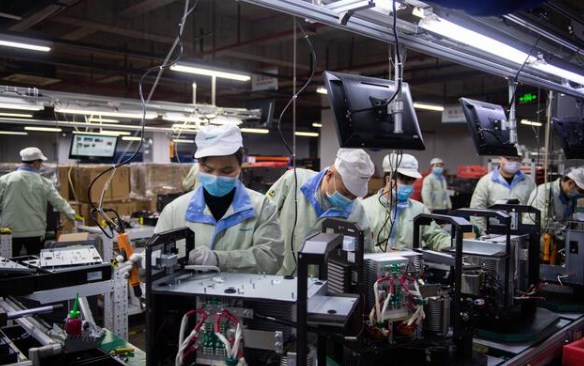Efficiency and productivity are more critical than ever in today's competitive industrial landscape. Companies continuously seek innovative solutions to enhance their operations and stay ahead of the curve. Welding automation has emerged as a game-changer, revolutionizing the manufacturing sector by increasing productivity and optimizing workforce capabilities. At Megmeet Welding Technology, we are at the forefront of this transformation, providing state-of-the-art welding automation solutions. In this blog, we will explore how welding automation can elevate your company's productivity and empower your workforce.
I. The Role of Welding Automation
Welding automation involves the use of automated systems and robotic technologies to perform welding tasks. These systems range from simple mechanized tools to advanced robotic welding cells capable of complex operations. The primary goal of welding automation is to enhance efficiency, improve quality, and reduce the dependency on manual labor for repetitive and hazardous tasks.

II. Benefits of Welding Automation
1) Increased Productivity:
Efficiency: Automated welding systems can operate continuously without breaks, significantly increasing the production rate compared to manual welding. This constant operation translates to higher output and faster project completion times.
Precision: Automated systems ensure consistent weld quality, reducing the need for rework and minimizing waste. This precision leads to a more streamlined production process and better utilization of resources.
Speed: Robots and automated systems can perform welding tasks at much higher speeds than human welders, further contributing to increased productivity. This speed is especially beneficial in high-volume production environments.
2) Enhanced Quality:
Consistency: Automated welding ensures uniformity in each weld, adhering to exact specifications every time. This consistency is crucial for maintaining high-quality standards in production.
Accuracy: Advanced sensors and control systems in automated welding machines provide precise control over welding parameters, resulting in superior weld quality and reduced defects.
Reliability: Automated systems are less prone to errors caused by fatigue or human factors, ensuring a reliable and consistent output.
3) Workforce Empowerment:
Skill Utilization: Automation allows skilled welders to focus on more complex and high-value tasks, such as programming, supervision, and quality control, rather than repetitive manual welding. This shift enhances job satisfaction and utilizes their expertise more effectively.
Safety: Welding can be a hazardous job, involving exposure to high temperatures, fumes, and intense light. Automation reduces the need for human welders to perform these dangerous tasks, significantly improving workplace safety.
Training and Development: Implementing welding automation creates opportunities for workforce development. Employees can be trained to operate and maintain automated systems, gaining new skills and advancing their careers.
4) Cost Savings:
Labor Costs: While the initial investment in welding automation can be significant, the long-term savings in labor costs are substantial. Automated systems reduce the need for a large workforce, lowering overall labor expenses.
Material Efficiency: The precision of automated welding reduces material waste, saving costs associated with rework and scrap.
Maintenance: Automated systems often require less maintenance than manual welding equipment, leading to further cost reductions.
III. Implementing Welding Automation: Key Considerations
1) Assess Your Needs:
Before investing in welding automation, conduct a thorough assessment of your production requirements. Identify areas where automation can have the most significant impact and consider the types of welding tasks that can be automated.
2) Choose the Right Technology:
Select automation solutions that align with your specific needs. At Megmeet Welding Technology, we offer a range of automatic welding machines tailored to various industrial applications, from simple mechanized tools to advanced robotic welding cells.
3) Plan for Integration:
Integrating automation into your existing workflow requires careful planning. Consider the layout of your production facility, the compatibility of new systems with existing equipment, and the potential need for infrastructure modifications.
4) Train Your Workforce:
Invest in training programs to equip your workforce with the skills needed to operate and maintain automated welding systems. Proper training ensures a smooth transition and maximizes the benefits of automation.
5) Monitor and Optimize:
Regularly monitor the performance of your automated welding systems and gather data to identify areas for improvement. Continuous optimization ensures that you get the most out of your investment in welding automation.
IV. Conclusion
Welding automation is a powerful tool for enhancing productivity, improving quality, and empowering your workforce. By investing in advanced welding automation solutions from Megmeet Welding Technology, you can achieve significant gains in efficiency, reduce costs, and create a safer, more satisfying work environment for your employees.
Related articles:
1. Robots & Cobots Revolutionizing Welding Automation
2. Pulse TIG welding: Process, Automation and Control
3. How to Choose the Best Automated Welding System for your Application?
4. Integration of automated welding and additive manufacturing
5. The future of welding automation: artificial intelligence and machine learning




